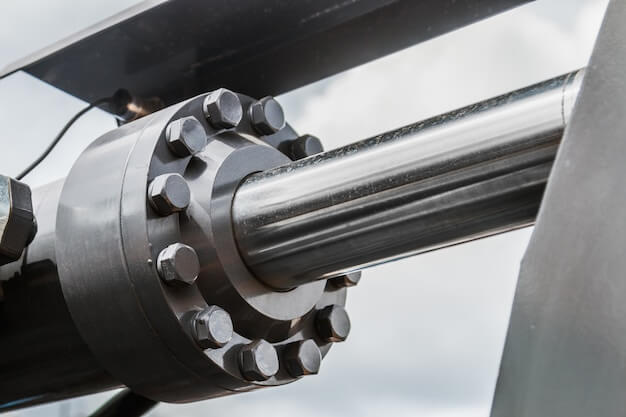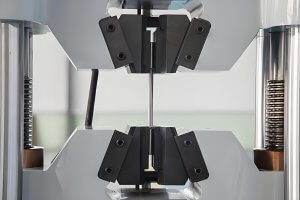Understanding CNC Machining: An Integral Process in Modern Manufacturing
CNC (Computer Numerical Control) machining is a critical process in today’s advanced manufacturing landscape. It refers to the automated control of machining tools such as mills, lathes, routers, and grinders by means of computer programming. This process has revolutionized production lines across various industries due to its superior accuracy, consistency, repeatability, speed, and cost efficiency over manual operations. With CNC machining, complex parts that would otherwise be difficult or impossible to manually fabricate can be produced with precision and ease. For instance, aerospace components that require exact measurements and high-quality materials are often crafted through CNC machining, underscoring its vital role in modern manufacturing.
Overview of CNC Machining
CNC or Computer Numerical Control is a sophisticated concept that revolutionized the manufacturing industry. Simply put, it involves using computers to control machine tools like mills, grinders, routers, and lathes with extreme precision and consistency. Different types of CNC machines function by interpreting a coding language known as G-code, which sequentially instructs movements along appointed paths on command without requiring manual operation. However, these processes are heavily reliant on the specific software utilised within each machine.
The role of software in CNC machining cannot be understated. It translates instructions into physical actions by transmitting signals to drive motors, thus enabling different axes’ movements across multiple directions. Some examples include CAD (Computer-Aided Design) for creating 3D models and blueprints; CAM (Computer Aided Manufacturing) for translating designs into specific commands; and DNC (Direct Numeric Control) for communicating these commands directly to the machine. To summarize, CNC machining brilliantly marries computer technology with physical fabrication to deliver high-precision components promptly and efficiently.
Different Types of CNC Machines
In the realm of Computer Numerical Control (CNC) machining, there is a broad spectrum of machines that cater to various manufacturing processes. The most common types include milling machines, lathes, and plasma cutters. A CNC milling machine automates metalworking using drill-like rotary cutters to remove material from a workpiece; it’s extensively used in industries such as aerospace and automotive for its precision. Next, we have the CNC lathe; this machine operates by rotating a workpiece on an axis and removing excess material through cutting or drilling, typically employed in processes involving intricate cylindrical parts.
Moving forward, CNC plasma cutters are specialized types that use a high-speed jet of ionized gas at high temperature to cut electrically conductive materials like steel, brass, and copper effectively. These machines offer speed and accuracy, which make them ideal for heavy industry application. It’s evident each type comes with unique capabilities designed to serve specific requirements in different sectors.
markdown
### Understanding CNC Milling Process: In-depth
The CNC milling process is a critical component of modern manufacturing, offering unparalleled precision and flexibility in creating complex parts. This in-depth exploration focuses on the step-by-step journey of CNC milling, from initial design to the final product. For those looking to leverage these capabilities, [Precision Machining Service](https://www.want.net/cnc-machining/precision-machining/) provides an exemplary standard of quality and precision.
#### Step 1: Design and CAD Model Creation
The process begins with the creation of a detailed CAD (Computer-Aided Design) model. This digital representation outlines the part’s dimensions, features, and tolerances, serving as the blueprint for the milling operation.
#### Step 2: CAM Process and Toolpath Generation
Following the CAD modeling, the design is imported into CAM (Computer-Aided Manufacturing) software. Here, the toolpaths are generated, converting the design into machine-readable instructions. This step is crucial for defining the trajectory of the milling tools, ensuring accuracy and efficiency.
#### Step 3: Material Selection and Preparation
Selecting the appropriate material is vital for the success of the CNC milling process. Factors such as strength, thermal stability, and machinability play a significant role in material selection. Once chosen, the material is prepared and secured onto the milling machine’s worktable.
#### Step 4: Machine Setup and Tooling
Before milling begins, the CNC machine is meticulously set up. This includes installing the required milling tools and configuring the machine settings based on the CAM software’s instructions. Precision in this step ensures the accuracy of the milling process.
#### Step 5: Milling Operation
With the machine prepared, the milling operation commences. The CNC machine follows the programmed toolpaths, removing material to shape the part. This process can involve various milling techniques, including face milling, angular milling, and form milling, depending on the part’s complexity.
#### Step 6: Inspection and Quality Control
Upon completion of the milling process, the part undergoes thorough inspection. This quality control step ensures that the part meets all specified dimensions and tolerances. Advanced measuring tools and techniques are employed to verify the accuracy of the milled part.
#### Step 7: Post-Processing and Finishing
The final step involves post-processing and finishing operations. These may include deburring, polishing, and surface treatments, enhancing the part’s appearance and performance. The choice of finishing techniques depends on the part’s intended application and requirements.
#### Table: CNC Milling Process Overview
| Step | Description |
|——|————-|
| 1. Design and CAD Model Creation | Creation of a detailed digital model outlining the part’s specifications. |
| 2. CAM Process and Toolpath Generation | Conversion of the CAD model into machine-readable instructions. |
| 3. Material Selection and Preparation | Choosing the appropriate material and preparing it for milling. |
| 4. Machine Setup and Tooling | Setting up the CNC machine and installing the necessary tools. |
| 5. Milling Operation | Executing the milling process to shape the part. |
| 6. Inspection and Quality Control | Ensuring the part meets all specified dimensions and tolerances. |
| 7. Post-Processing and Finishing | Applying finishing operations to enhance the part’s appearance and performance. |
The CNC milling process exemplifies the synergy between advanced technology and manufacturing precision. By following these steps, manufacturers can achieve high-quality parts tailored to specific applications. For those seeking to harness the full potential of CNC milling, partnering with a [Precision Machining Service](https://www.want.net/cnc-machining/precision-machining/) ensures access to expert knowledge, state-of-the-art technology, and impeccable quality standards.
Importance of Precision in CNC Milling
In the world of computer numerical control (CNC) milling, precision is not just a requirement—it’s an absolute necessity. The exactitude of measurements and movements in CNC milling can directly impact the quality of the final product, making it fundamental to successful operations. An error as tiny as 0.001 inches could cause performance issues, part mismatch or even system failure. It would be like dialling one wrong number in a phone call – you end up reaching someone else entirely instead of the intended recipient. In a similar vein, if drilling or cutting isn’t done with utmost precision, the final product might not fit into its intended space, causing assembly troubles, breakdowns or safety issues. Thus, maintaining precision in each step of the CNC milling process ensures that every groove, contour, and cut corresponds exactly to design specifications, eventually leading to superior quality products.
Understanding G-Codes and M-Codes in CNC Machining
The fundamental language of CNC programming lies within two types of codes known as the G-codes and M-codes. Both these coding aspects serve critical roles in how a CNC machine functions. The G-codes, – or preparatory characters—set the motion of the machines with path commands, hence controlling crucial factors like feed rate (G00/G01), interpolation mode (G08/G09), amongst others. On the other hand, M-codes, short for “miscellaneous” functions, are indirect commands that control the ancillary functions such as tool changes (M06), spindle rotation (M03/M04), coolant controls (M07/M08) and others. This combination makes CNC machinery highly precise and customizable.
Benefits of Using CNC Machines Over Traditional Methods
The advantages of utilizing Computer Numerical Control (CNC) machines over conventional manual methods are noteworthy. The main benefit lies in their exceptional efficiency; unlike traditional machining processes that require time and hands-on labor, CNC machines perform precise automated operations with minimal human intervention. This directly contributes to increased productivity as even complex jobs can be completed faster. For instance, a CNC machine’s versatility allows it to execute an array of tasks like milling, drilling, or cutting simultaneously, negating the need for multiple individual appliances.
Moreover, these advanced systems have significantly broader applications than their manual counterparts offer. They provide high precision manufacturing solutions across various industrial sectors such as automotive, aerospace, and healthcare. A real-world example illustrating enhanced productivity offered by CNC automation is seen in the automobile industry where, by using CNC lathe machines, manufacturers produce hundreds of identical car parts per hour, something previously unthinkable with traditional techniques.
Challenges and Solutions in CNC Machining
The world of CNC machining holds promising potential but comes with its unique challenges. The primary issues often revolve around high initial costs, complexities in programming, machine maintenance, and concerns about waste produced during the operation. Initial establishment requires substantial investment and skilled personnel for efficient operation. To circumvent this setback, it is pivotal to undertake a rigorous cost-benefit analysis and procure only essential machines initially. Implementing complex software could be daunting for some; hence, training programs need to be institutionalized for seamless integration. Regular maintenance checks increase overall longevity, curbing unforeseen expenses. With regards to environmentally unsustainable byproducts from operations, using advanced chip management systems may substantially reduce waste. Furthermore, recycling can help manage metal chips developed during cutting processes. It’s crucial that users stay aware of these common obstacles in order to prevent them in advance.
Conclusion: Grasping the Intricacies of CNC Machining
In sum, through this profound exploration into the world of Computer Numerical Control (CNC) machining, we have unveiled its significance and functionality in detail. We delved into various CNC processes including milling, the intricacy of programming involved, its automation aspect, essentiality to mass production, and critically how it ensures precision and efficiency in manufacturing. This multifaceted understanding should elicit a newfound respect for CNC machining’s pivotal role and potential applications that can lead to transformative results across industries. Artistry isn’t confined to canvas or clay; it also echoes vibrantly within the exactitude of CNC machining.
Other Articles You Might Enjoy
- Is Copper the Right Choice for Electrical Component CNC Machining? A Detailed Analysis
CNC Machining of Electrical Components Utilizing Copper In the field of electrical engineering, Computer Numerical Control (CNC) machining plays an integral role, particularly in the development and manufacturing of electrical…
- Precision Aluminum Machining for Aerospace: Custom CNC Services
Precision Aluminum Machining for Aerospace: Custom CNC Services In the world of manufacturing, precision aluminum machining plays a pivotal role, particularly in aerospace industries where superior precision is required. As…
- The Evolution of CNC Machining: From Aluminum to Composite Materials
Introduction to CNC Machining CNC (Computer Numerical Control) machining is a manufacturing process that utilizes computerized controls to initiate and manipulate machine tools, such as lathes, mills and grinders. With…






